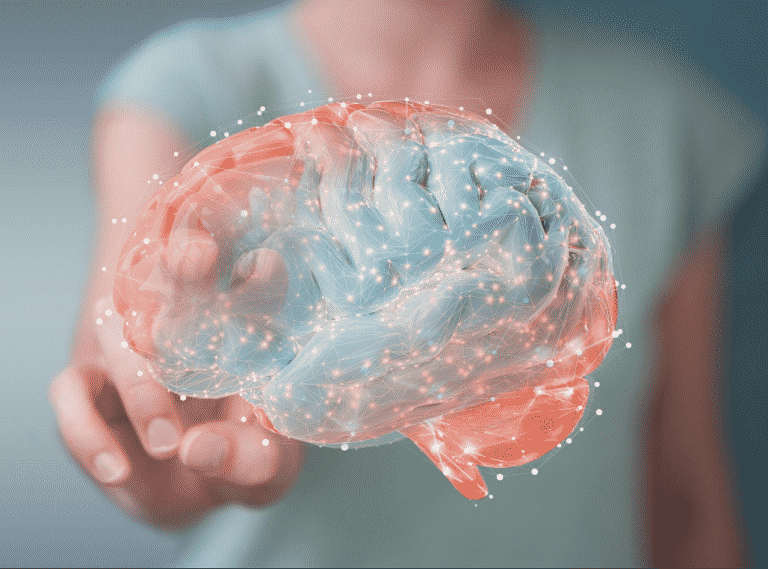How To Heal A Brain, And Yes, Recovery Is Possible
You can heal a brain, even though we don’t talk about it enough. Mental health is something most people prefer not to talk about unless mental illness enters the picture. If you have mental illness or addiction in your family, you know how challenging it is to feel safe, secure, and sometimes even loved. You may be terrified of mental illness, and you wouldn’t be alone. Mental illness can lead to addictions, added depression, many kinds of emotional disorders, and even suicide. No one thinks mental illness is a good thing. Yet, there is so much that can be done when we become more aware of what is wrong inside, and all the ways healing and growth are possible. You can make mental health your life’s work and become the person you want to be. This is a really exciting idea if you’re open to it. Making mental health and recovery my life’s work certainly changed my life.
Heal A Brain: How Does Damage Begin
There are seven types of mental illness: mood disorders, anxiety disorders, personality disorders, psychotic disorders, eating disorders, trauma-related disorders, and substance abuse disorders. Some you’re born with, others develop through adverse childhood experiences like trauma, abuse, sexual assault, war, displacement, addiction, and family dysfunction. Mental illness, or dis-ease as I think of it, often leads to experimentation with substances, alcohol, and a wide variety of compulsive and destructive behaviors. Addiction is defined as a chronic relapsing disease of the brain’s reward system. It’s a brain disease but also has a psychological component, which often makes people think they have a choice about stopping and returning to what they were before the disease began. But that’s not realistic. The choice is whether to get help and when you do get help, how hard will you work to get better? No one can recover and heal without plenty of help and support.
Heal A Brain: This is how addiction started with me
We don’t often talk about the family tree of mental illness and addiction, but I was genetically loaded with suicide, depression, narcissism, and alcoholism in my family tree of mental health. Like millions of teens, I didn’t live in a healthy environment. Family dysfunction didn’t make things better, and there were some early teen traumas, too. I had plenty of reasons to be anxious. I began to struggle in life and school. An anxiety disorder manifested itself around the age of 15. I turned into a teen addict. In fact, life felt intolerable without the hazy mask of drugs and alcohol. Dr. Kate Truitt, a licensed Clinical Psychologist, founder of Dr. Kate Truitt & Associates, and the CEO and Training Director for the Trauma Counseling Center of Los Angeles, put it this way:
“To pull trauma into addiction, different substances or different behaviors create different electrochemical and neurochemical outcomes. But one of the main things that they all do is release a dopamine dump. If we don’t have a sense of safe other in our childhood, and an internalized sense of safety, then our system is living in that unsafe state, and so it’s trying to get some sort of powerful activation of dopamine in order to modulate itself. Alcohol is a powerful example of this because when we drink alcohol our system goes into what’s called an alpha wave state, and that’s a sense that we get when we’re meditating. But, for somebody who has mental trauma, their system doesn’t generate alpha at the same levels that a normal, healthy brain would, if at all.”
Dr. Kate Truitt
Heal A Brain: My mental health recovery began when I was 21
I tried to get sober in college. I wanted to be normal, but I didn’t know what was wrong with me and kept falling back into old habits. For another eight years, I was powerless over addiction, repeating the same destructive behavior, and failing to launch in many areas of life. I tried again at 29 after I married. It took a divorce and a year of chronic relapse to become stable in sobriety. Finally, in my early thirties, I’m free of the prison of addiction. You’d think the war would be over, and I’d be the great person of my childhood? Not even close. Addiction is a symptom of other problems that I hadn’t touched yet. I had another five years of troubled romantic relationships, working for the same abusive personalities, and various periods of dysfunctional relationships with food, exercise, and whatever other trend was going at the time. Imagine spending a decade trying to get sober only to find life much worse in sobriety, and this time there’s no solution to numb yourself with? Dr. Louise Stanger, LCSW, Author, and Interventionist explained it like this:
“Trauma like denial comes into play to protect you when incidents and memories are challenging. We cover the traumatic event like the suicide of a loved one, or an unwanted sexual advance with confabulations that allow us to still navigate our world. Often, we might experience pains in our body or develop chronic pain (migraines, Fibromyalgia, etc.) as a way of covering up what has happened to us. History teaches us we repeat what we do not repair and so working with Trauma albeit subjective (I am not good enough), objective (sudden death, abuse, suicide) or collective (natural disasters, Covid 19, Racism, etc. allows us to rise to our best possible selves.”
Dr. Louise Stanger, LCSW, CDWF, CSAT-1
Heal A Brain: It’s living up to your potential
In my 30s, I had to face the tough reality that I was not living up to my potential. I had problematic relationships, problematic views about myself, and an inability to stop repeating patterns no matter how badly I wanted to change. I had no idea that the trauma I had endured as a child was preventing me from growing in important ways.
“The patterns caused by trauma play out across the course of our lives. If we don’t do the healing work, we continue to buy into the repetitive patterns. It’s because our system is trying to find a way out, it’s trying to solve the problem of our childhood trauma. It’s inevitable because we’re attachment-based as a species that we’re going to do it in an attachment-based way.”
Dr. Kate Truitt
I had behaviors and attachments to things that didn’t serve me, and they came out in every area of my life. It’s an odd thing to accept that because you were treated one way in childhood years, you may be replaying that out with bosses and partners 20 years later. But it’s in identifying these behaviors and cycles that we can ultimately figure out the real issues. Gregg Champion, Co-Founder of START UP RECOVERY and Founder of The Recovery Playbook, said this:
“Trauma shapes our perception on everything. It’s as if those who have experienced trauma have a filter or a lens in which every interaction with others travels through, and often in a distorted version of reality. It can manifest as being a “people pleaser” denying one’s one happiness for the perceived sake of the other person. Often trauma causes one to believe that people are out to get them or intend to inflict harm and take things very personally. In my own experience and working with others, it comes down to “first thought, wrong thought” with any adult situation — anger issues, sexual history, co-dependency, abandonment, etc. can trigger us to “react” in our “traumatic self” first with the wrong thought or action.”
Gregg Champion
What kinds of therapy would work for me?
In my 30s, I explored new types of therapy. After one particularly unpleasant partner, a therapist suggested inner child work. Weekly, we would introduce 10-year old Lindsey into the room and ask her how she felt about the decisions I was making. Would I let 10-year old Lindsey go out with that guy? “No!” I replied. Eyes wide with horror. Something was shifting inside me, seeing myself this way. Innocent, not deserving of bad treatment or pain.
My mom, author Leslie Glass, and I were introduced to Tian Dayton’s work with psychodrama in those years. Tian Dayton is a Psychologist, Author, and Psychodramatist. We were making documentaries and interviewed Tian to learn about psychodrama and how it helped with addiction recovery and healing the family model. Well, without realizing it, we had an unexpected session with her, on camera, that led to a breakthrough for both of us.
“In order to relieve ourselves of the weight of unfelt, unprocessed emotion, our inner world needs to somehow be made manifest. It needs to come out, and psychodrama makes that very easy because it allows for the full and, if desired, cathartic expression of whatever emotions are in there. It lets us express our sadness or anger to the actual person toward whom we feel it through role players. It can be so unsatisfying, to say nothing of detrimental, to express historical pain that is tied to our drunk mother when we were thirteen, as a forty-year-old to that same mother who may be sober. They may have forgotten about what we’re talking about or may not want to hear it. But role play allows those historical periods of our lives to come alive for a moment, and we can go full throttle into our grief and anger. The satisfaction, the release, and the freedom can be profound.”
Tian Dayton PhD
Psychodrama and Inner child work led to CBT (Cognitive Behavioral Therapy), which helped enormously with impulse control and emotional stability. I learned techniques like how to draw an “invisible bubble” around myself and not let anyone’s energy, or rage, get in. All of that sent me down the path, but it did not prevent another relapse, another traumatic break-up, and another lousy boss. Something was blocking me from real, lasting change, and for the life of me, I didn’t know how to fix it. Then I met Deborah Sweet. Dr. Deborah Sweet is a Psy.D and founder of The Trauma Counseling Center in Los Angeles. We met around 2014 when I moved to LA, and she was the first person I ever heard talk about somatic work.
“If you’ve written about it, prayed about it, and talked about it and it still hasn’t worked, it’s time to bring in somatic therapy, EMDR, brainspotting or havening. If you’ve tried many things and they haven’t worked, these modalities will work.”
-Dr. Deborah Sweet
FYI, Havening is a treatment I recently learned a lot about from Dr. Kate Truitt. Havening is a psycho-sensory technique, meaning applying touch to create an electro-chemical response, that can also help permanently heal your mind. You may have heard of it because Justin Bieber is a fan, but this is a great technique that has real results. You can also do on yourself at any time, and it really will help calm you at the moment.
“One of the things that’s really interesting about when we feel safe, and that’s what I like about Havening, is it actually mimics the electrochemical sense of safety when you do the Havening touch. When we have that internalized sense of safety, we also have agency and the ability to act or to make proactive choices and move forward in our life. Children who grow up in homes without a sense of safety don’t have this, and so as their nervous system is developing, they’re in a state of chronic stress. We know that people who have recurring depression almost always have a minimum of 6 ACEs, adverse childhood experiences, in their childhood. Chronic long-term depression is a really wonderful and heartbreaking indicator that somebody has had multiple childhood traumas.”
Dr. Kate Truitt
What I felt I lacked was precisely that—an ability to maintain proactive choices and move forward. I needed one more kind of treatment. So, I went back to therapy again. This time it was all about achieving goals. I wanted a healthy relationship and a healthy work-life. That’s it. I had learned how to feel good about myself, I had learned about self-care, I had tools for recovery, and I knew what I wanted. But I couldn’t live it if that makes sense. EMDR was introduced to help these new thoughts and feelings “sink in.” To finally cleanse the demons still haunting me from the past and root my new thinking into place so it could flower. Deborah Sweet explained it this way:
Have you ever taken a walk and you notice you feel better? That’s because you’re engaging in bilateral stimulation, which means you are stimulating right and left hemispheres of the brain as you step right foot and left foot, right foot and left foot. Bilateral stimulation increases integration and when our thoughts and feelings are integrated, we feel better.”
-Dr. Deborah Sweet
What is EMDR
EMDR (Eye Movement Desensitization and Reprocessing) is a psychotherapy treatment that was initially designed to alleviate the distress associated with traumatic memories. A client is asked to focus on the traumatic or disturbing event while the therapist begins sets of side-to-side eye movements, sounds, or taps. The sets of eye movements, sounds, or taps are repeated until the event becomes less disturbing. A typical EMDR therapy session lasts from 60-90 minutes. One of the interesting aspects of EMDR is that lasting effects can be had in five to eight weeks.
Over the course of a year and a half, I mixed EMDR with focused talk therapy, and I saw the changes I was looking for taking place. Sometimes it felt like an out of body experience watching myself get a good gig or make considerable strides in the emotional stability and development department. Finally, after all these years of recovery, therapy, and self-help, I was able to feel secure that it was working. I don’t minimize all the work that came before somatic work. It was building a powerful foundation for me that would allow EMDR to help complete the job.
Why do these somatic modalities work?
When you do that you do free-floating discussions, and the idea is it takes it away from the amygdala and doesn’t leave it there. Trauma will make you hyper-vigilant and you experience the world through a different eye. What next will happen?
Dr. Louise Stanger, LCSW, CDWF, CSAT-1
From then on, everything has been different for me. People say I’m calmer. My boyfriend actually told me the other day, “You never complain.” I don’t. I’m grateful, and I feel that way. Could it be the mild anti-depressants I’m on? Possibly. But I don’t think so. My heart feels settled in a way it never did before. I guess if I had to describe it, I’d say my heart got broken very young, and it was broken over and over again as the years passed. For decades, I lived with great darkness and pain inside me. I don’t anymore. It’s gone. That’s not to say there aren’t bad moments from time to time, but it’s no longer my normal. It doesn’t even occur to me anymore to engage in destructive or self-destructive behavior. 95% of the time anyway.
The experts led me through many kinds of treatment, and all of them helped
As I understand my story, trauma didn’t cause my addiction disorder, but it helped create a wonderful space for addiction to settle. Sobriety gave me the gift of being able to see what the real problems were. Time, 12-step programs, and therapy helped heal the wounds and behaviors. But EMDR made it all stick. It made me feel like the person I had wanted to be for so long, and it opened the door for the sunlight of the spirit I had been working on harnessing for all those years, to shine through.





















